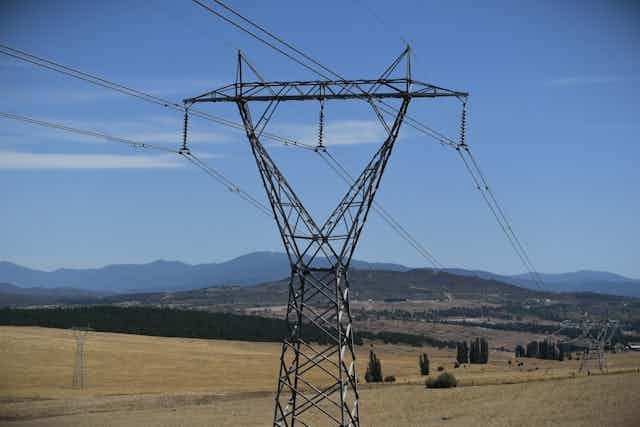In 1999, Australians were paying some of the lowest electricity prices in the world. Now they are among the highest. What went wrong?
Back then, the electricity network in the southern and eastern states of Australia had just been reformed to create a regional wholesale market, called the National Electricity Market. Some states – Victoria and then South Australia – privatised their industry. All states then progressively deregulated their retail electricity markets, and transferred the regulation of their remaining network monopolies to two quasi-federal regulatory agencies, the Australian Energy Regulator and the Australian Energy Markets Commission.
These reforms replaced the state governments’ electricity commissions – derided by some as Soviet-style relics – with what was purported to be a dynamic new arrangement of competition and private risk-taking.
The reforms were bolstered by reports by the Industry Commission (now the Productivity Commission) predicting that even though electricity prices were already low, they would fall further as the pressure of competition drove the industry to become more efficient and customer-focused.
The exact opposite happened. The sector’s productivity has declined sharply after tens of billions of dollars were spent on network infrastructure - particularly substations – that are not used at anything like their full capacity, even at the peak of an Australian summer.
But the failures are not just in the regulation of networks. Our retail markets compare very unfavourably with those in other countries, and our wholesale electricity markets seem to be cornered regularly – most recently in South Australia on February 8, where a lack of available generation led regulators to cut the power to some 90,000 customers.
Besides not being cheaper, the system is also no greener or more reliable. The amount of greenhouse emissions per unit of electricity produced has shown little change, and as South Australia has shown, the system can’t always keep the lights on.
Australia is blessed with a surplus of every conceivable energy resource and no shortage of technical and managerial skill. How did it come to this?
Passing the buck
The common factor underlying these failures is accountability. Officials use the phrase “all care and no responsibility” to describe the situation in which politicians become as skilled in finger-pointing as they are in showing empathy for those suffering through power blackouts.
The latest manifestation of this is the mis-characterisation of Australia’s electricity problem as one of renewables versus fossil fuels. In this view, the solution is to turn back the clock to last century’s high-emission technologies (such as coal), despite the clear risk to the private sector of doing so.
What can sensibly be done to get us out of this mess? The real problem is not renewables – it’s poor governance.
Fixing governance problems is hard, but it’s clear which direction we should take. It needs to be made obvious who should be strung up when things go wrong, or covered in glory when they go right. This clarity will in turn deliver the accountability needed to anticipate and solve problems, rather than the buck-passing and blame-dodging we’re seeing now.
The state model
There are lessons to be learned from other comparable federal countries, including Germany, the United States and Canada. They too have regional power markets and retail competition, but they have avoided the bickering between federal and state governments seen in Australia.
Their electricity networks (except interconnectors) and their retail markets are overseen by the states and provinces – as used to be the case in Australia.
When accountability is clearly established, we will know where the buck stops when the lights go out or prices become unaffordable. But under Australia’s current quasi-federal system, there is an irresistible temptation to point fingers and obfuscate if things go wrong.
Politicians past and present created this problem, and they must now rise above it. The immediate task is not to tinker with existing institutions, but instead to make some fundamental changes.
The starting point should be to recognise that electricity supply is the province (under our Constitution) of the states and territories, not the Commonwealth. It would be better to get on with fixing our own back yards than idly waiting and wishing, often without good reason, for “national coordination”.
We should reassign oversight of networks and retail markets back to the states and territories, as used to be the case. Regional transmission interconnection and market operation should continue to be federally coordinated, but the primary responsibility for pricing and reliability must rest with the states. The states might choose to delegate the oversight of various issues to central entities, but these entities must be clearly answerable to those states under the terms of their delegation.
In some respects these will be major changes, and in others, mainly a change of mindset and orientation. But for too long now we have been pushing a model of governance that does not reflect our constitutional responsibilities, and is at odds with the approach adopted in other federal countries.
It has failed and it is time to change. Other nations’ experience can give us confidence that if we make changes we can look forward to vibrant electricity markets that actually work in customers’ best interests.

